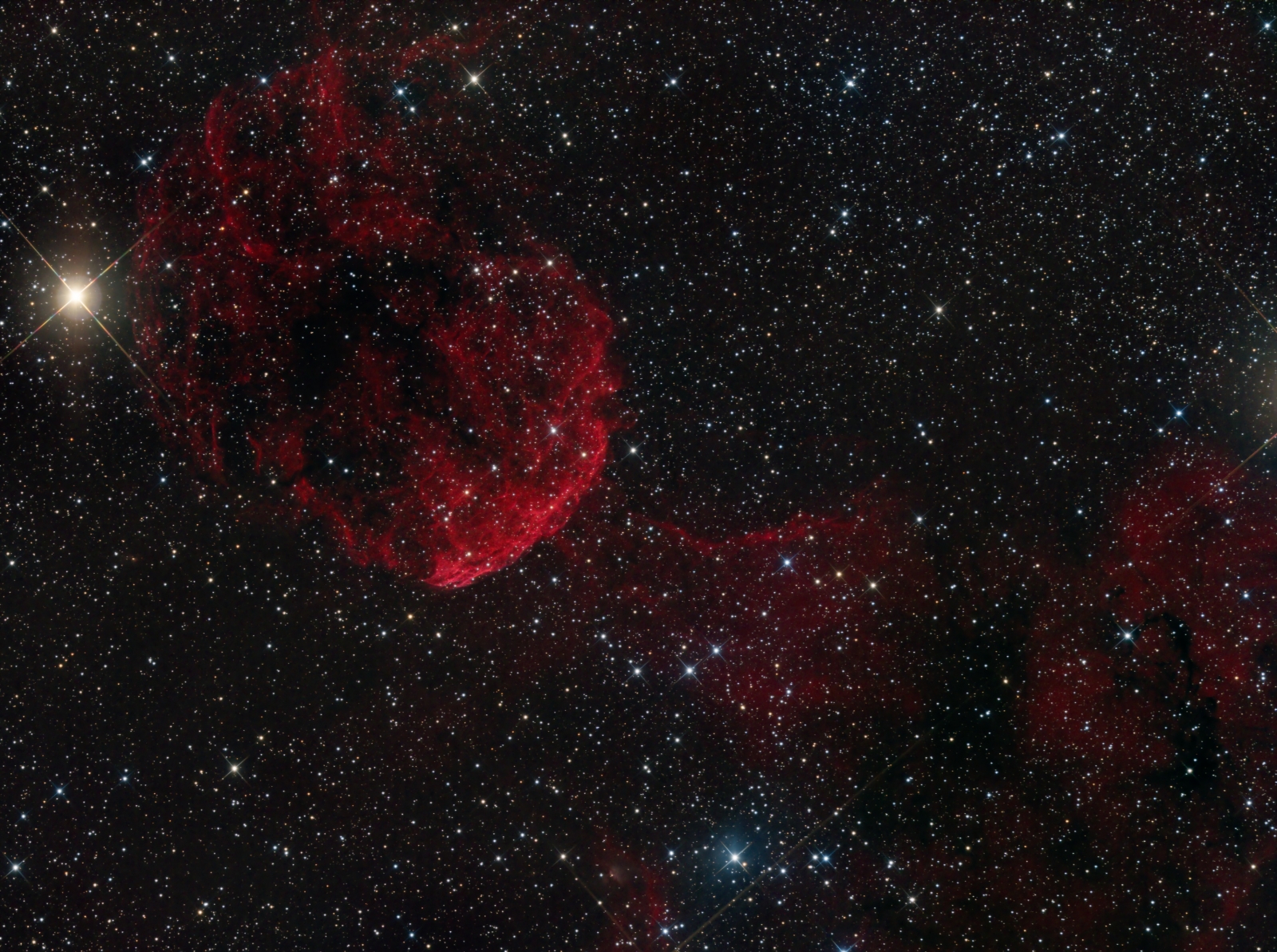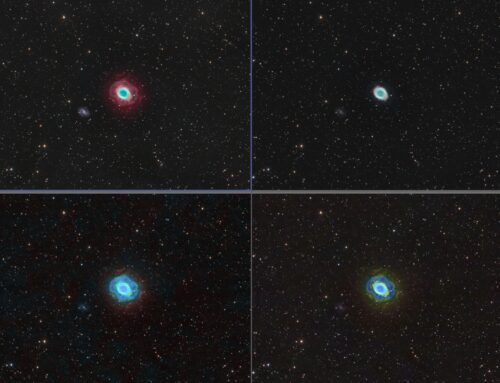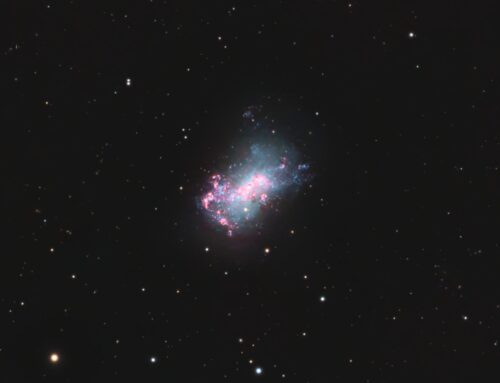IC443, The Jellyfish Nebula
Click image for full size version
December 26, 2014; Astronomy Magazine Picture of the Day March 18, 2013
The celestial Jellyfish is swimming more or less upside down in the upper left corner of this image. It is IC443. It is swimming towards its lower right where the image shows part of a very large nebula called Sh2-249, a member of the Sharpless catalogue. These are both in the constellation Gemini and lie about 5,000 light years away. IC443 is a remnant left over from from a supernova explosion (exploding large star) in our galaxy. The explosion is thought to have occurred 3,000 – 30,000 years ago.
Near the bottom of the image is a small blue reflection nebula, vdv 75, which surrounds the star 12 Gem. It is about 5,200 light years away.
This image was acquired in 2012 and re-processed using improved techniques in December 2014.
Tekkies:
SBIG STL-11000M camera, Baader LRGB filters, 10″ f/3.6 ASA astrograph, MI-250 mount. Guided with STL-11000’s internal guider. Acquistion, guiding, calibration, registration and integration all done using Maxim-DL. All other processing in PixInsight. Shot from my SkyShed in Guelph, Ontario. No moonBelow average transparency and seeing. Hazy for all shots.
6x5m of R, G and B and 8x10m Ha (total 2hr50m).
HaRGB:
Ha, R, G and B masters were cropped to remove edge artifacts from stacking. The R, G and B channels were combined to make an RGB image. Ha and RGB were processed with DBE, combined with the NB-RGB script, and Colour Calibration was applied. HistogramTransformation was applied, followed by TGVDenoise and another HistogramTransformation to reset the black point.
Synthetic Luminance:
Creation and cleanup: The R,G,B and Ha masters were combined using the ImageIntegration tool (average, additive with scaling, noise evaluation, iterative K-sigma / biweight midvariance, no pixel rejection). DBE was applied to neutralize the background.
Deconvolution: A star mask was made to use as a local deringing support (strength 0.8). A copy of the image was stretched to use as a range mask. Deconvolution was applied (40 iterations, regularized Richardson-Lucy, external PSF made using DynamicPSF tool with about 30 stars).
Stretching: HistogramTransformation was applied. TGV Denoise was applied and another HistogramTransformation to reset the black point.
Combining SynthL with HaRGB:
The luminance channel of the HaRGB image was adjusted as follows:
1. Extract luminance from the HaRGB image.
2. Apply LinearFit using the SynthL channel as a reference.
3. Use ChannelCombination in the Lab mode to replace the luminance of the HaRGB with the fitted luminance from step 2.
Then LRGBCombine was then used to make a SynthLHaRGB image (colour noise reduction on with default settings, saturation at 0.32, luminance at 0.5).
Final Processing
The DarkStructureEnhance script was applied (scale 8, 1 iteration, 0.1 strength) before splitting the image into large and small scale structures as follows:
Small-scale structures were isolated using MultiscaleLinearTransform (4 wavelet layers, residual layer deselected) on a copy of the SynthLHaRGB image. PixelMath was used to make an image of only large scale structures by subtracting the small-scale image from the SynthLHaRGB (no rescaling). A duplicate of the small-scale image was used as a mask on the small-scale image and contrast was boosted. Colour saturation and contrast were boosted on the large-scale image. Then small-scale and large-scale images were added back together with PixelMath. Colour saturation and curves were adjusted slightly.
Image scale is about 2.2 arcsec per pixel for this camera / telescope combination.







Leave A Comment